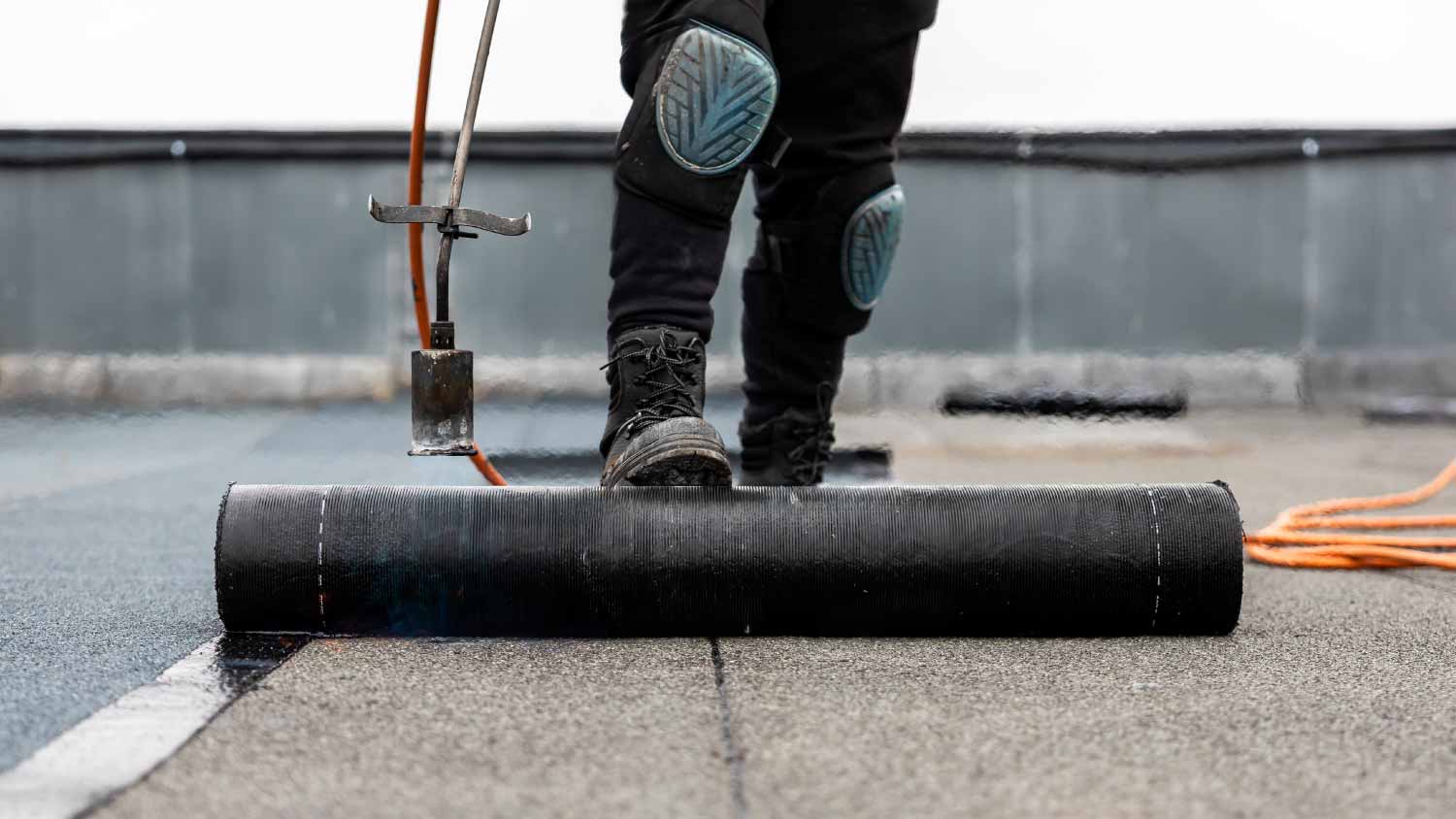When it comes to roofing materials, you have quite a few options. One that is gaining popularity is rubber, which is often used on low-sloped or flat roofs. Learn more about rubber roof pros and cons to see if it’s the right type of roofing material for your home.
What Is a Rubber Roof?
A rubber roof is made from sheets of natural or synthetic rubber. Rubber roofing materials include ethylene propylene diene terpolymer (EPDM) and thermoplastic polyolefin (TPO). The main differences between TPO and EPDM are the longevity, color, and repair process.
Rubber roofs are most commonly used on low-slope or flat roofs, rather than steep-slope roofs.
| Pros | Cons |
|---|---|
| Weather-resistant | Not aesthetically pleasing |
| Cost-effective | Low impact resistance |
| Easy Installation | Limited load bearing |
Pros of a Rubber Roof
For the right home, a rubber roof has several benefits.
Flexible
Buildings move and settle over time, and it’s important that the materials they’re made from move along with them. Rubber is a flexible material, meaning it’s able to shift and flex with little risk of snapping or cracking.
Long-Lasting
How long does EPDM roofing last? Decades, as long as it’s installed correctly. Most rubber roofs have a life span of 30 years if not 40 or 50 years.
Low Maintenance
Some types of roofs require a lot of TLC. Not a rubber roof. While you may want to inspect your roof once or twice a year, you won’t need to worry about making extensive repairs regularly.
Weather-Resistant
Heat, UV light, water—you name it, rubber roofs can resist it. They can also withstand fire, algae or moss growth, and damage from pests.
Easy Installation
Since rubber roofs are typically installed on low-slope or flat roofs, the installation process is less complicated compared to installing shingles, clay, or tile on a steep roof. That said, you still want to make sure you find a local professional roofer who specializes in rubber roofs to do the job.
Cons of a Rubber Roof
Of course, nothing in life is perfect. Rubber roofs do have some drawbacks.
Limited Aesthetic Appeal
You may think of rubber roofs as the ugly ducklings of the roofing world. Even if you install rubber shingles, they’ll never be as beautiful as a clay or tile roof. That said, you do have some aesthetic options, such as choosing the color of the roof, particularly if you choose TPO roofing.
Not Impact-Resistant
While rubber roofs can resist fire, heat, and water, they don’t fare as well against impact, such as heavy branches landing on your home or a hail storm.
Not Always Load Bearing
While you may be able to walk on your rubber roof, you’ll need to have it reinforced if you want to install a deck or anything substantial over it.
Alternatives to a Rubber Roof

Photo: Uldis Laganovskis / Adobe Stock
If you have a low-slope or flat roof, rubber isn’t your only option. Alternatives include modified bitumen, asphalt, and metal. Each option typically has a higher price tag than the cost of EPDM roofing, but the advantages, such as appearance and longevity, may make the higher price worth it.
Should You Install a Rubber Roof?
Is a rubber roof right for you? It depends largely on the type of roof you have. Also, consider your budget, how you want your home to look, and the type of weather conditions in your area before making your decision. Contact a local roofing contractor to discuss your options and make an informed choice about your roof.









